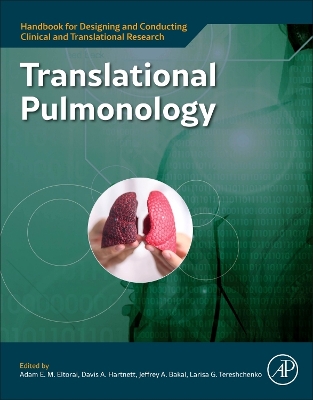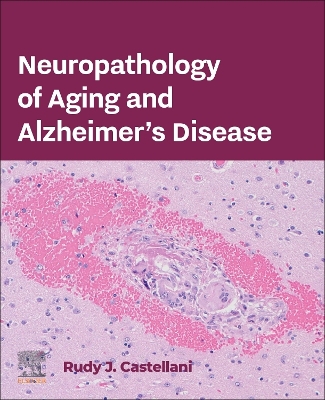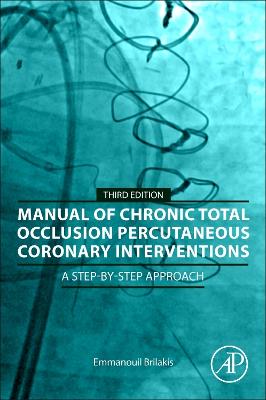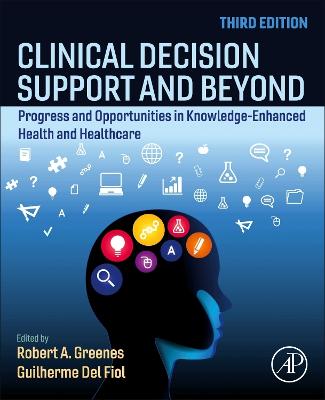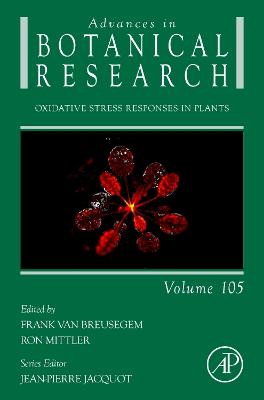Sustainable and Circular Management of Resources and Waste Towards a Green Deal
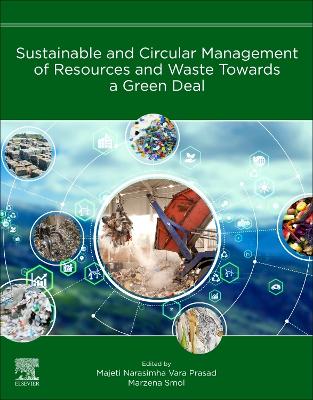 -10%
portes grátis
-10%
portes grátis
Sustainable and Circular Management of Resources and Waste Towards a Green Deal
Smol, Marzena; Vara Prasad, Majeti Narasimha
Elsevier - Health Sciences Division
02/2023
468
Mole
Inglês
9780323952781
15 a 20 dias
450
Descrição não disponível.
Section 1. Strategies for implementation of Green Deal
1. Achieving sustainable development goals via green deal strategies
2. Farm to fork: sustainable agrifood systems, integrated pest management
3. Global directions for the green deal strategies-Americas, Europe, Australia, Asia, and Africa
Section 2. Circular economy
4. Circular Economy in Green Deal Strategies
5. Circular Economy - the new innovation wave
6. Circular Economy from a Water and wastewater management perspective
7. Mine waste: contributions to the circular economy
8. Waste to energy and circular economy: the case of anaerobic
9. Food waste management in Thailand for sustainable development
10. Sustainable use of construction and demolition wastes in a circular economy perspective
Section 3. Sludge management - resource recovery
11. Biofiltration as an ecological method of removing sewage sludge doors by solar drying
12. Sustainable/ Integrated / Sewage Sludge Management
13. Bioleaching of heavy metals from a contaminated soil using bacteria from waste water sludge
14. Sewage sludge valorization in the context of resource recovery
Section 4. Phosphorus management
15. Importance of Phosphorus raw materials in Green Deal strategies
16. Regional strategies for the management of Phosphorus
17. Integrated Nutrient Management as a driving force for the sustainable use of phosphorus
18. Phosphorus raw materials in Sustainable Agriculture
19. Phosphorus-driven eutrophication mitigation strategies
20. Phosphorus recovery - recent developments and case studies
Section 5. Climate Action
21. Action toward carbon neutrality - essential elements of the Green Deal
22. Water and climate change in the regional, national and international perspective
23. Water resources and climate change: regional, national and international perspective
24. Environmental footprint as a tool to measure climate neutrality activities
25. How to achieve climate neutrality-the impact of fertilizer usage on climate change
Section 6. Clean Energy Transition
26. Energy efficiency to improve Sustainability
27. Green Strategies for Waste to Energy
Section 7. Sustainable management and global agenda
29. Digital technologies and clean energy
29. From waste to value: enhancing circular value creation in municipal solid waste management ecosystem through artificial intelligence-powered robots
1. Achieving sustainable development goals via green deal strategies
2. Farm to fork: sustainable agrifood systems, integrated pest management
3. Global directions for the green deal strategies-Americas, Europe, Australia, Asia, and Africa
Section 2. Circular economy
4. Circular Economy in Green Deal Strategies
5. Circular Economy - the new innovation wave
6. Circular Economy from a Water and wastewater management perspective
7. Mine waste: contributions to the circular economy
8. Waste to energy and circular economy: the case of anaerobic
9. Food waste management in Thailand for sustainable development
10. Sustainable use of construction and demolition wastes in a circular economy perspective
Section 3. Sludge management - resource recovery
11. Biofiltration as an ecological method of removing sewage sludge doors by solar drying
12. Sustainable/ Integrated / Sewage Sludge Management
13. Bioleaching of heavy metals from a contaminated soil using bacteria from waste water sludge
14. Sewage sludge valorization in the context of resource recovery
Section 4. Phosphorus management
15. Importance of Phosphorus raw materials in Green Deal strategies
16. Regional strategies for the management of Phosphorus
17. Integrated Nutrient Management as a driving force for the sustainable use of phosphorus
18. Phosphorus raw materials in Sustainable Agriculture
19. Phosphorus-driven eutrophication mitigation strategies
20. Phosphorus recovery - recent developments and case studies
Section 5. Climate Action
21. Action toward carbon neutrality - essential elements of the Green Deal
22. Water and climate change in the regional, national and international perspective
23. Water resources and climate change: regional, national and international perspective
24. Environmental footprint as a tool to measure climate neutrality activities
25. How to achieve climate neutrality-the impact of fertilizer usage on climate change
Section 6. Clean Energy Transition
26. Energy efficiency to improve Sustainability
27. Green Strategies for Waste to Energy
Section 7. Sustainable management and global agenda
29. Digital technologies and clean energy
29. From waste to value: enhancing circular value creation in municipal solid waste management ecosystem through artificial intelligence-powered robots
Este título pertence ao(s) assunto(s) indicados(s). Para ver outros títulos clique no assunto desejado.
5R principle; AD process; Agriculture; Agrobiodiversity; Anaerobic digestion; Artificial intelligence; Best practices; Bio-based fertilizers; Bioconversion process; Biofiltration; Bioleaching; CE strategy; Carbon emissions; Carbon footprint; Carbon neutrality; Circular economy; Civil engineering; Clean energy; Climate change; Climate changes; Climate neutrality; Climate policy; Community-based recycling; Computing devices; Critical raw materials (CRM); Cropping system fertilization; Cycling of nutrients; Data quality; Dewatering; Digestion/stabilization; Digital technology; Drought; EU common agricultural policy; Ecological policy; Ecosystem; Efficient P fertilizers; Effluents; Electrometallurgical; Emission gap; Energy cost; Energy engineering; Environmental assessment; Environmental policy; European Green Deal; Eutrophication; Evapotranspiration; Fertilizers; Food waste; Free energy; Gas ammonia; Global warming; Global water cycle; Green Deal; Green deal; Green deal (GD); Green strategies; Greenhouse gases; Greenwashing; Heavy metal pollution; Hydrogen sulfide; Innovation; Lebanon case study; Life cycle assessment; Lithium-ion battery (LIB); MSW treatment; Management; Material recovery and reuse; Mechanism analysis; Mediterranean region; Methodology; Microclimate; Mining industry; Mitigation strategies; Municipal solid waste; Municipal solid waste management; Nature-based solutions; Nutrients; Odors; Organic acid; Organic phosphorus; P adsorption; Paris Agreement; Phosphate fertilizer; Phosphate sources; Phosphorus; Phosphorus (P); Phosphorus cycle; Phosphorus recovery; Phosphorus sources; Project; Raw materials; Reclaimed water; Recoveries; Recovery; Recycling efficiency; Reduction in usage of hazardous chemicals; Regeneration; Regulation; Resource; Resources
Section 1. Strategies for implementation of Green Deal
1. Achieving sustainable development goals via green deal strategies
2. Farm to fork: sustainable agrifood systems, integrated pest management
3. Global directions for the green deal strategies-Americas, Europe, Australia, Asia, and Africa
Section 2. Circular economy
4. Circular Economy in Green Deal Strategies
5. Circular Economy - the new innovation wave
6. Circular Economy from a Water and wastewater management perspective
7. Mine waste: contributions to the circular economy
8. Waste to energy and circular economy: the case of anaerobic
9. Food waste management in Thailand for sustainable development
10. Sustainable use of construction and demolition wastes in a circular economy perspective
Section 3. Sludge management - resource recovery
11. Biofiltration as an ecological method of removing sewage sludge doors by solar drying
12. Sustainable/ Integrated / Sewage Sludge Management
13. Bioleaching of heavy metals from a contaminated soil using bacteria from waste water sludge
14. Sewage sludge valorization in the context of resource recovery
Section 4. Phosphorus management
15. Importance of Phosphorus raw materials in Green Deal strategies
16. Regional strategies for the management of Phosphorus
17. Integrated Nutrient Management as a driving force for the sustainable use of phosphorus
18. Phosphorus raw materials in Sustainable Agriculture
19. Phosphorus-driven eutrophication mitigation strategies
20. Phosphorus recovery - recent developments and case studies
Section 5. Climate Action
21. Action toward carbon neutrality - essential elements of the Green Deal
22. Water and climate change in the regional, national and international perspective
23. Water resources and climate change: regional, national and international perspective
24. Environmental footprint as a tool to measure climate neutrality activities
25. How to achieve climate neutrality-the impact of fertilizer usage on climate change
Section 6. Clean Energy Transition
26. Energy efficiency to improve Sustainability
27. Green Strategies for Waste to Energy
Section 7. Sustainable management and global agenda
29. Digital technologies and clean energy
29. From waste to value: enhancing circular value creation in municipal solid waste management ecosystem through artificial intelligence-powered robots
1. Achieving sustainable development goals via green deal strategies
2. Farm to fork: sustainable agrifood systems, integrated pest management
3. Global directions for the green deal strategies-Americas, Europe, Australia, Asia, and Africa
Section 2. Circular economy
4. Circular Economy in Green Deal Strategies
5. Circular Economy - the new innovation wave
6. Circular Economy from a Water and wastewater management perspective
7. Mine waste: contributions to the circular economy
8. Waste to energy and circular economy: the case of anaerobic
9. Food waste management in Thailand for sustainable development
10. Sustainable use of construction and demolition wastes in a circular economy perspective
Section 3. Sludge management - resource recovery
11. Biofiltration as an ecological method of removing sewage sludge doors by solar drying
12. Sustainable/ Integrated / Sewage Sludge Management
13. Bioleaching of heavy metals from a contaminated soil using bacteria from waste water sludge
14. Sewage sludge valorization in the context of resource recovery
Section 4. Phosphorus management
15. Importance of Phosphorus raw materials in Green Deal strategies
16. Regional strategies for the management of Phosphorus
17. Integrated Nutrient Management as a driving force for the sustainable use of phosphorus
18. Phosphorus raw materials in Sustainable Agriculture
19. Phosphorus-driven eutrophication mitigation strategies
20. Phosphorus recovery - recent developments and case studies
Section 5. Climate Action
21. Action toward carbon neutrality - essential elements of the Green Deal
22. Water and climate change in the regional, national and international perspective
23. Water resources and climate change: regional, national and international perspective
24. Environmental footprint as a tool to measure climate neutrality activities
25. How to achieve climate neutrality-the impact of fertilizer usage on climate change
Section 6. Clean Energy Transition
26. Energy efficiency to improve Sustainability
27. Green Strategies for Waste to Energy
Section 7. Sustainable management and global agenda
29. Digital technologies and clean energy
29. From waste to value: enhancing circular value creation in municipal solid waste management ecosystem through artificial intelligence-powered robots
Este título pertence ao(s) assunto(s) indicados(s). Para ver outros títulos clique no assunto desejado.
5R principle; AD process; Agriculture; Agrobiodiversity; Anaerobic digestion; Artificial intelligence; Best practices; Bio-based fertilizers; Bioconversion process; Biofiltration; Bioleaching; CE strategy; Carbon emissions; Carbon footprint; Carbon neutrality; Circular economy; Civil engineering; Clean energy; Climate change; Climate changes; Climate neutrality; Climate policy; Community-based recycling; Computing devices; Critical raw materials (CRM); Cropping system fertilization; Cycling of nutrients; Data quality; Dewatering; Digestion/stabilization; Digital technology; Drought; EU common agricultural policy; Ecological policy; Ecosystem; Efficient P fertilizers; Effluents; Electrometallurgical; Emission gap; Energy cost; Energy engineering; Environmental assessment; Environmental policy; European Green Deal; Eutrophication; Evapotranspiration; Fertilizers; Food waste; Free energy; Gas ammonia; Global warming; Global water cycle; Green Deal; Green deal; Green deal (GD); Green strategies; Greenhouse gases; Greenwashing; Heavy metal pollution; Hydrogen sulfide; Innovation; Lebanon case study; Life cycle assessment; Lithium-ion battery (LIB); MSW treatment; Management; Material recovery and reuse; Mechanism analysis; Mediterranean region; Methodology; Microclimate; Mining industry; Mitigation strategies; Municipal solid waste; Municipal solid waste management; Nature-based solutions; Nutrients; Odors; Organic acid; Organic phosphorus; P adsorption; Paris Agreement; Phosphate fertilizer; Phosphate sources; Phosphorus; Phosphorus (P); Phosphorus cycle; Phosphorus recovery; Phosphorus sources; Project; Raw materials; Reclaimed water; Recoveries; Recovery; Recycling efficiency; Reduction in usage of hazardous chemicals; Regeneration; Regulation; Resource; Resources


